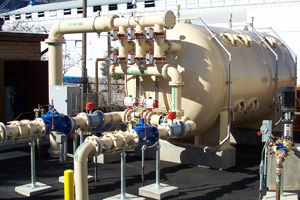
Arsenic Removal
Arsenic is a naturally occurring contaminant found in many groundwater sources. In 2001 the USEPA established a maximum contaminant level (MCL) of 0.010 mG/L (10 ppb). The common forms of arsenic are arsenite (As III) and arsenate (As V). Arsenite is more soluble in water and less available for precipitation or adsorption than arsenate; therefore, oxidation is often implemented to optimize arsenic removal.
Loprest can provide arsenic removal systems designed for the customer’s site-specific conditions and treatment objectives.
The treatment methods typically evaluated include:
- Coagulation/filtration
- Adsorptive Media
- Ion exchange
- Membrane processes
Each method has both advantages and limitations due to the specific nature of the raw water quality, treatment system size, ability to discharge liquid residuals, and level of system complexity.


